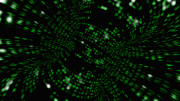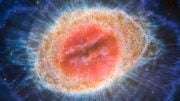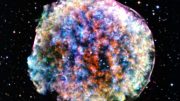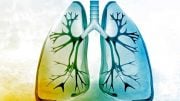A groundbreaking AI method created by EPFL and Harvard scientists allows for efficient tracking of neurons in moving animals, using a convolutional neural network with ‘targeted augmentation’. This significantly reduces manual annotation, accelerating brain imaging research and deepening our understanding of neural behaviors.
EPFL and Harvard scientists develop an AI-based method for tracking neurons in moving animals, enhancing brain research efficiency with minimal manual annotation.
Recent advances allow imaging of neurons inside freely moving animals. However, to decode circuit activity, these imaged neurons must be computationally identified and tracked. This becomes particularly challenging when the brain itself moves and deforms inside an organism’s flexible body, e.g. in a worm. Until now, the scientific community has lacked the tools to address the problem.
Development of AI Method for Neuron Tracking
Now, a team of scientists from EPFL and Harvard have developed a pioneering AI method to track neurons inside moving and deforming animals. The study, now published in Nature Methods, was led by Sahand Jamal Rahi at EPFL’s School of Basic Sciences.
The new method is based on a convolutional neural network (CNN), which is a type of AI that has been trained to recognize and understand patterns in images. This involves a process called “convolution,” which looks at small parts of the picture – like edges, colors, or shapes – at a time and then combines all that information together to make sense of it and to identify objects or patterns.
The problem is that to identify and track neurons during a movie of an animal’s brain, many images have to be labeled by hand because the animal appears very differently across time due to the many different body deformations. Given the diversity of the animal’s postures, generating a sufficient number of annotations manually to train a CNN can be daunting.
Two-dimensional projection of 3D volumetric brain activity recordings in C. elegans. Green: genetically encoded Calcium indicator, various colors: segmented and tracked neurons. Credit: Mahsa Barzegar-Keshteli (EPFL)
Targeted Augmentation
To address this, the researchers developed an enhanced CNN featuring ‘targeted augmentation’. The innovative technique automatically synthesizes reliable annotations for reference out of only a limited set of manual annotations. The result is that the CNN effectively learns the internal deformations of the brain and then uses them to create annotations for new postures, drastically reducing the need for manual annotation and double-checking.
The new method is versatile, being able to identify neurons whether they are represented in images as individual points or as 3D volumes. The researchers tested it on the roundworm Caenorhabditis elegans, whose 302 neurons have made it a popular model organism in neuroscience.
Using the enhanced CNN, the scientists measured activity in some of the worm’s interneurons (neurons that bridge signals between neurons). They found that they exhibit complex behaviors, for example changing their response patterns when exposed to different stimuli, such as periodic bursts of odors.
Impact on Research
The team has made their CNN accessible, providing a user-friendly graphical user interface that integrates targeted augmentation, streamlining the process into a comprehensive pipeline, from manual annotation to final proofreading.
“By significantly reducing the manual effort required for neuron segmentation and tracking, the new method increases analysis throughput three times compared to full manual annotation,” says Sahand Jamal Rahi. “The breakthrough has the potential to accelerate research in brain imaging and deepen our understanding of neural circuits and behaviors.”
Reference: “Automated neuron tracking inside moving and deforming C. elegans using deep learning and targeted augmentation” by Core Francisco Park, Mahsa Barzegar-Keshteli, Kseniia Korchagina, Ariane Delrocq, Vladislav Susoy, Corinne L. Jones, Aravinthan D. T. Samuel and Sahand Jamal Rahi, 5 December 2023, Nature Methods.
DOI: 10.1038/s41592-023-02096-3
Funding: École Polytechnique Fédérale de Lausanne (EPFL), Helmut Horten Stiftung, Swiss Data Science Center









Be the first to comment on "AI Revolution in Neuroscience: Precise Tracking of Neurons in Moving Animals"